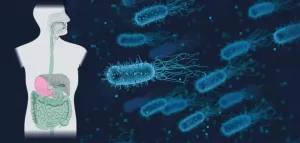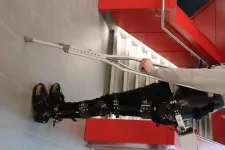Researchers present spontaneous sparse learning for PCM-based memristor neural networks
2021-03-15
(Press-News.org) An international team of researchers, affiliated with UNIST has unveiled a novel technology that could improve the learning ability of artificial neural networks (ANNs).
Professor Hongsik Jeong and his research team in the Department of Materials Science and Engineering at UNIST, in collaboration with researchers from Tsinghua University in China, proposed a new learning method to improve the learning ability of ANN chips by challenging its instability.
Artificial neural network chips are capable of mimicking the structural, functional and biological features of human neural networks, and thus have been considered the technology of the future. In this study, the research team demonstrated the effectiveness of the proposed learning method by building phase change memory (PCM) memristor arrays that operate like ANNs. This learning method is also advantageous in that its learning ability can be improved without additional power consumption, since PCM undergoes a spontaneous resistance increase due to the structural relaxation after amorphization.
ANNs, like human brains, use less energy even when performing computation and memory tasks, simultaneously. However, the artificial neural network chip in which a large number of physical devices are integrated has a disadvantage that there is an error. The existing artificial neural network learning method assumes a perfect artificial neural network chip with no errors, so the learning ability of the artificial neural network is poor.
The research team developed a memristor artificial neural network learning method based on a phase-change memory, conceiving that the real human brain does not require near-perfect motion. This learning method reflects the "resistance drift" (increased electrical resistance) of the phase change material in the memory semiconductor in learning. During the learning process, since the information update pattern is recorded in the form of increasing electrical resistance in the memristor, which serves as a synapse, the synapse additionally learns the association between the pattern it changes and the data it is learning.
The research team showed that the learning method developed through an experiment to classify handwriting composed of numbers 0-9 has an effect of improving learning ability by about 3%. In particular, the accuracy of the number 8, which is difficult to classify handwriting, has improved significantly. The learning ability improved thanks to the synaptic update pattern that changes differently according to the difficulty of handwriting classification.
Researchers expect that their findings are expected to promote the learning algorithms with the intrinsic properties of memristor devices, opening a new direction for development of neuromorphic computing chips.
INFORMATION:
The findings of this research have been published in the online version of Nature Communications on January 12, 2021. This study has been supported by the National Research Foundation of Korea (NRF), UNIST's Future Leading Specialized Research Project, and the UNIST Graduate School of Artificial Intelligence.
[Attachments] See images for this press release:

ELSE PRESS RELEASES FROM THIS DATE:
2021-03-15
A chromatin-regulating enzyme has been shown by in-depth interdisciplinary investigations to be a key driver of a common type of lung cancer. Drugs that target the enzyme could improve treatment and survival rates for this particular cancer.
"Squamous cell carcinoma represents nearly one third of all lung cancers in humans," says KAUST structural biologist Lukasz Jaremko, who led the research along with colleagues at Stanford University and The University of Texas MD Anderson Cancer Center, U.S. "Our joint structural and dynamics investigations, including enzymatic activity studies, genetic analyses, and mouse model and human cell results, ...
2021-03-15
Basic, acidic, basic again: for pathogenic bacteria such as Salmonella, the human digestive tract is a sea change. So how do the bacteria manage to react to these changes? A team of researchers from the Max Planck Institute for Terrestrial Microbiology in Marburg led by Andreas Diepold has now provided a possible explanation: pathogenic bacteria can change components of their injection apparatus on the fly - like changing the tires on a moving car - to enable a rapid response.
Some of the best-known human pathogens - from the plague bacterium Yersinia pestis to the diarrhea pathogen Salmonella - use a tiny hypodermic needle to inject disease-causing ...
2021-03-15
Despite pandemic-driven restrictions on movement, there were over 12,000 accidents in Madrid in 2020, leading to 31 fatalities. In Barcelona, there were more than 5,700 collisions, causing 14 deaths. Pedestrian and vehicle safety is a priority, which is why a research project at the Universitat Oberta de Catalunya (UOC) is harnessing artificial intelligence (AI) to make decisions that will make cities safer. The researchers have looked into the correlation between the complexity of certain urban areas and the likelihood of an accident occurring there.
According to the researchers, the data they have gathered can be used to train neural networks to detect probable ...
2021-03-15
Last December, the Parliament of Catalonia unanimously approved the incorporation into its legislation of second-order violence against those who give their support to victims of violence against women. A recent study compiles testimonies of victims, and analyses this form of intimidation
To tackle violence against women, it is essential for victims to have the support of those surrounding them and to prevent them from being isolated. But what happens if the people around them are not protected? The work of Jose Ramón Flecha García, founder of the Community of Research on Excellence for All (CREA), and various academic teams, has led to the approval in the Catalan parliament of the first legislation on the Second Order of Sexual Harassment (SOSH).
The following point ...
2021-03-15
Robotics researchers are developing exoskeletons and prosthetic legs capable of thinking and moving on their own using sophisticated artificial intelligence (AI) technology.
The system combines computer vision and deep-learning AI to mimic how able-bodied people walk by seeing their surroundings and adjusting their movements.
"We're giving robotic legs vision so they can control themselves," said Brokoslaw Laschowski, a PhD candidate in systems design engineering who leads a University of Waterloo research project called ExoNet.
Exoskeletons and prosthetic devices operated by motors already exist, but users must manually ...
2021-03-15
In 2016, a collaborative group of research and education specialists received funding from the National Science Foundation for the project 'Building a Comprehensive Evolutionary History of Flagellate Plants' -- also known as 'Genealogy of Flagellate Plants' (GoFlag). Members of the team have the ambitious goal of reconstructing the 470-million-year history of one of the most diverse groups of land plants on the planet.
The first of several forthcoming publications from the project was published in a recent issue of Applications in Plant Sciences. In their inaugural article, the researchers report on the successful development of 451 nuclear target enrichment probes, which correspond to short, variable loci.
By creating a standard ...
2021-03-15
When rain began falling in northern Georgia on Sept. 15, 2009, little did Atlantans know that they would bear witness to epic flooding throughout the city. Neighborhoods, like Peachtree Hills, were submerged; Georgia's busiest expressway was underwater, as were roads and bridges; untreated sewage mingled with rising flood waters; cars and people were swept away. Then-Georgia-governor, Sonny Perdue, declared a state of emergency.
Moisture from the Gulf of Mexico fueled the flood of 2009. A decade later, Arizona State University researchers are asking whether a ...
2021-03-15
The habitats of freshwater fish species are threatened by global warming, mainly due to rising water temperatures. A 3.2-degree Celsius increase in global mean temperature would threaten more than half of the habitat for one third of all freshwater fish species. The number of species at risk is ten times smaller if warming is limited to 1.5 degrees. This is the conclusion of a study led by Radboud University, in collaboration with Utrecht University, PBL Netherlands Environmental Assessment Agency, Leiden University and others, and published in Nature Communications ...
2021-03-15
DALLAS, March 15, 2021 -- Beta-blockers treat various cardiovascular diseases and were not more likely to cause depression compared to other similar treatments, according to new research published today in Hypertension, an American Heart Association journal. While depression may occur during beta-blocker therapy, the research suggests beta-blockers are not the likely cause.
Beta-blockers are a class of medications that reduce the heart rate, the heart's workload and the heart's output of blood, which, together, lower blood pressure. They are a common treatment for cardiovascular diseases, including heart failure, arrhythmias, chest pains and high blood pressure. Researchers have suspected ...
2021-03-15
DALLAS, March 15, 2021 — Primary care clinics can play an important role in preserving patients’ brain health using the American Heart Association’s Life’s Simple 7 as a guide, as well as addressing 6 other factors associated with cognitive decline, according to a new American Stroke Association/American Heart Association Scientific Statement. “A Primary Care Agenda for Brain Health,” published today in the Associations’ journal Stroke.
Preserving brain health in an aging population is a growing concern in the U.S. An estimated one in five Americans 65 years and older has mild cognitive impairment, and one in seven has dementia. By 2050, the number of Americans with dementia is expected to triple, ...
LAST 30 PRESS RELEASES:
[Press-News.org] Researchers present spontaneous sparse learning for PCM-based memristor neural networks




